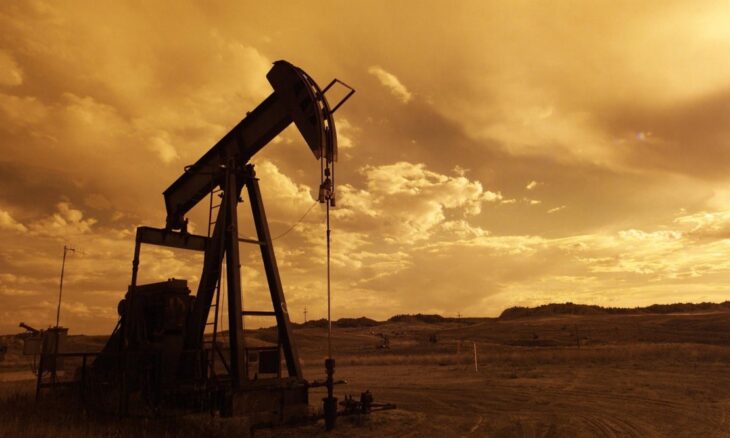
Last Updated on April 23, 2025 by Surender Kumar
The world’s thirst for energy has driven the oil drilling industry to develop innovative techniques and technologies to extract this valuable resource from deep beneath the Earth’s surface.
Oil drilling, often referred to as the backbone of the global energy sector, involves a series of complex steps and methods that enable us to tap into underground reservoirs. In this blog post, we will take you through the fundamental steps and methods of oil drilling.
Table of Contents
1. Site selection
The journey of oil drilling begins with careful site selection. Geologists and geophysicists play a crucial role in this step, utilizing seismic surveys and geological data to identify promising drilling locations. They aim to pinpoint subsurface formations where oil or gas reservoirs may be present. This initial step is essential as it can greatly affect the success and profitability of the drilling operation.
2. Drilling rig setup
Once a suitable site is identified, the next step is the setup of the drilling rig. This massive piece of machinery includes a derrick, a drill string, and various other components. Rig assembly and setup are meticulous tasks that require skilled personnel. Safety measures are paramount during this phase to protect the crew and equipment.
3. Spudding in
With the rig in place, the spudding in process commences. Spudding in involves using a smaller drill bit to create a shallow hole, often referred to as the “spud hole.” This initial hole provides stability and a starting point for the deeper drilling operations to follow.
4. Rotary drilling
Rotary drilling is the heart of the oil drilling process. This method employs a rotary drill bit, which is rotated to cut through rock formations. The bit’s rotation creates the borehole, gradually making it deeper. As the drill bit descends into the Earth, it grinds through various geological layers, including sedimentary rock, shale, and sometimes even hard granite.
5. Casing installation
To prevent the borehole from collapsing and to isolate drilling fluids from the surrounding formations, steel casings are installed. These casings are typically made of steel and are inserted into the borehole as drilling progresses. They are cemented in place to ensure structural integrity and prevent any contamination of groundwater. In tougher environments, like high-pressure zones or areas with corrosive gases, standard steel sometimes isn’t enough. That’s where tougher materials come in.
Alloys, like these Nickel Alloys Applications, offer the strength and corrosion resistance needed to handle more extreme conditions. They’re commonly used in demanding drilling projects where durability and long-term performance are critical. Choosing the right casing material is key to maintaining well integrity and avoiding costly failures down the line.
6. Drilling fluids
Drilling fluids, or “mud,” are an integral part of any drilling operation. However, keeping track of these fluids within the borehole can be a challenge. That’s where continuous float-level transmitters come in. These devices allow drilling operators to monitor the exact volume of drilling fluids within the borehole at all times.
Additionally, mud tanks are used to store and pump these fluids down the borehole. Without proper monitoring and management of drilling fluids, the drilling process could become inefficient or even dangerous.
7. Drilling mud analysis
Continuous monitoring of the drilling mud is a critical aspect of oil drilling. The properties of the mud, including density, viscosity, and gas content, are closely monitored. Sudden changes in these properties can indicate shifts in subsurface conditions. Additionally, gas content in the mud can be a sign of the presence of oil or gas reservoirs.
8. Core sampling
To gain a more comprehensive understanding of the geological formations and to assess the presence of hydrocarbons, core sampling is performed. Core samples are cylindrical rock segments extracted from the borehole. These samples are carefully preserved and analyzed in the laboratory to determine rock porosity, permeability, and the presence of oil or gas.
9. Logging and evaluation
Oil drilling involves sophisticated tools and techniques for well logging and evaluation. Various tools are lowered into the borehole to gather data on rock formations, porosity, permeability, and the presence of oil or gas. This information is crucial for making informed decisions about whether to continue drilling and where to target production.
10. Completion
After successful drilling and evaluation, the final step is well-completion. During this phase, production tubing is installed in the borehole, along with wellhead equipment. Well completion also involves the implementation of safety measures to ensure the well’s integrity and prevent environmental hazards.
Companies like Renegade Wireline Services play a critical role in this process, providing specialized wireline solutions that facilitate the installation and maintenance of downhole equipment, ensuring efficient and safe operations throughout the well completion phase.
Conclusion
Oil drilling is a complex and multifaceted process that involves a series of carefully orchestrated steps and methods. From site selection to well completion, each stage requires precision, expertise, and attention to detail. The oil drilling industry continues to evolve, with advancements in technology and environmental practices shaping the way we extract and utilize this vital energy resource.
Understanding the fundamentals of oil drilling is crucial for appreciating the energy production that powers our modern world.

I am a passionate blogger having 10 years of experience in blogging and digital marketing. I started List Absolute in 2018 to give my passion a live platform. I have also a good hand in writing unique and quality content. Here I contribute in my free time. Thanks for reading. Let me know if I can help you get your work done in a timely manner.
